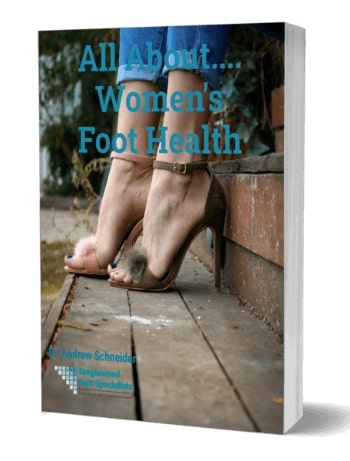
Bunion surgery is a major surgery, even though it's done on an outpatient basis. It involves sedation and general anesthesia. Because of that, you cannot drive on the day of surgery. That's why you'll need someone to accompany you to your procedure. They will take you home after your recovery, keeping you safely away from the wheel.
Now, there are some rare cases where one of my patients insists on local anesthesia only. They simply don't want sedation. But even in that case, I still don't allow them to leave the Houston outpatient surgery center on their own.
Clearly, you can't drive the day of your bunion surgery. (Or any surgery, for that matter.) But what happens in the days and weeks that follow? The answer depends on the foot that was operated on, and the nature of your surgery.
Can you Drive the Week After Bunion Surgery?
After the day of your bunion surgery, driving depends on several different factors. For most patients, if I operated on your left foot, and you drive an automatic vehicle, then driving is not a problem. (As long as you aren't in pain, and you feel like you're alert and safe to drive.) But if you had bunion surgery on your right foot, or if your car has a clutch, then there is a safety issue.
You see, after I operate on a bunion on your foot, there will be a dressing on the incision site. And you will be wearing a stiff surgical shoe. Both of these factors limit your driving in a couple of ways. First, you have to be concerned about your surgery and the investment you are making in your recovery. Think about it....if you are forced to slam on your brakes, you can injure the area of your bunion surgery. Should that happen, it can extend your recovery. Worse? It might even force you into another, emergency, surgery to correct the damage from the slam.
The second issue is the safety of driving. Like I said, you'll have an extensive gauze dressing on your foot. And you'll be wearing an inflexible shoe. Because of that combination, you'll lose the mobility and sensitivity you need to drive safely. How bad could that be? You'll be shocked to see what new research reveals.
When is it Safe to Drive After Bunion Surgery?
Research in the Journal of Bone and Joint Surgery suggests that you shouldn't drive until six weeks after bunion surgery. Why? Two weeks after bunion surgery, only 25% of study participants could fully and quickly brake in an emergency. But, for most people, that picture changed at the six-week mark.
You see, at that point, we know that most people's pain levels will drop enough for you to drive. More importantly, the study shows that you'll have regained the reflexes and strength you need to brake suddenly in an emergency.
Even so, your feet may still be sensitive. And you'll be a bit out of practice at using that foot. As such, you'll have to use your best judgment about whether you're ready to drive. But don't feel bad if you're not. Because many patients who have a right foot bunion surgery won't be ready to drive until eight to nine weeks post-op.
Driving After Minimally Invasive Bunion Surgery ![foot on brake pedal]()
The surgical procedure you receive is largely determined by the severity of your bunion. That's why I always encourage patients to come in as soon as they notice a bony bump forming beneath the great toe joint. Why is this so important? Smaller bunions are easier to treat. In many cases, you can avoid surgery entirely. But if you choose to remove a small bunion surgically, the procedure can be less invasive.
Depending on your recovery timeline, you may be able to drive the week of your surgery. In that case, we'll provide you with a small postoperative shoe that you'll have to wear for at least one week. You may choose to wear it for a longer period of time to protect your toe and foot while you drive. Just remember that this shoe is much thicker than typical footwear. So, again, you'll have reduced sensitivity and reaction times may slow. Meaning you'll have to carefully consider whether driving is safe for you and others on the road.
Surgical Bunion Care in Houston, TX
At Tanglewood Foot Specialists in Houston, TX, we are committed to solving your bunion pain, whether that's with or without foot surgery. Before suggesting surgery, we'll always explore less-invasive treatment options. This could include orthotics to prevent small bunions from getting bigger. Or it could mean changing shoes and padding your bunion to prevent pain and inflammation.
For many people, these measures provide sufficient relief. But for others, they don't. In those cases, surgery can provide relief.
Now, just as we strive to keep you safe and pain-free before we treat your bunions, we do the same afterward. For that reason, we also need to make sure you stay safe following your procedure. That's the only way to ensure that you are able to fully enjoy your new life without pain from the bunion on your foot. For that reason, we urge you to contact Houston podiatrist Dr. Andrew Schneider for an immediate appointment to treat your bunions.
And after your bunion surgery, please be smart and follow all your post-operative instructions. Especially the ones about when it's safe to return to driving after foot surgery.






















